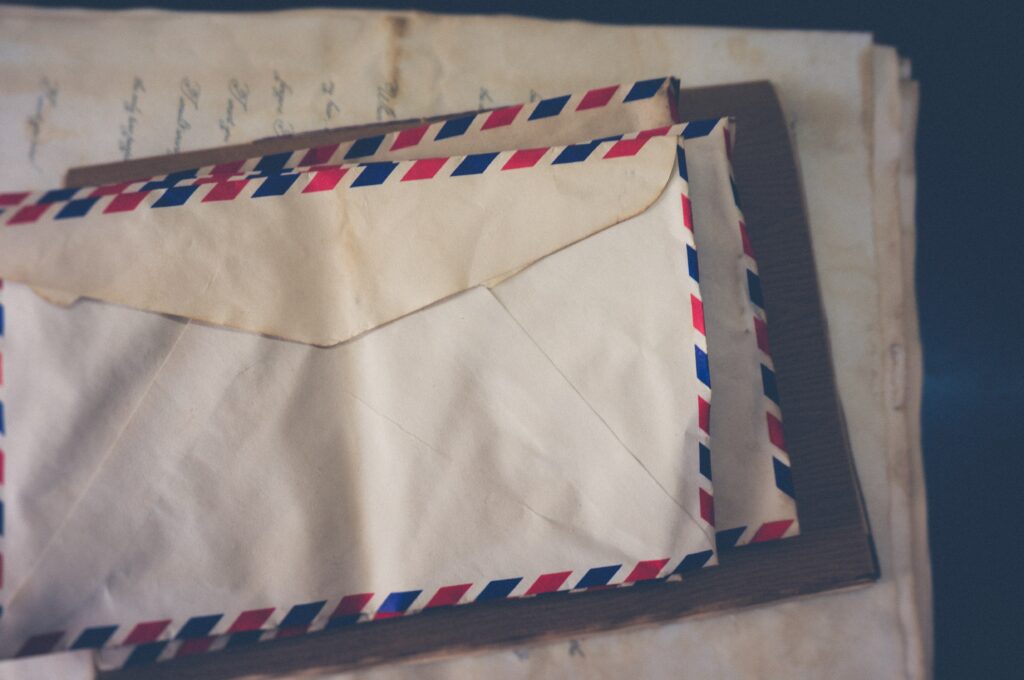
Are you looking for a secure way to send money? If so, you might want to consider a money order. No bank account? No problem! You can still send and receive money.
If you’re sending someone money by traditional mail, a money order is one of your best options. They are a secure payment that only the receiver is able to cash in. We’re going to go through what exactly a money order is, when you should use one, and how they work.
What is a money order?
A money order is a secure payment method that can safely be sent by mail. They are a cashable document that is certified and in physical form. You’re able to send a money order without a bank or credit card. You can place a money order for up to $999.99 CAN.
It’s also important to note that you can only purchase and cash money orders within Canada. They are purchased at any local Canada Post. If you need to post an international money order, this can be done at one of the big banks in Canada.
What’s the difference between a money order and cash?
A money order is a far more secure way to send money to someone by mail than cash. With cash, there’s a risk that it will be lost. If it is, there’s no insurance and you’ve basically suffered a loss. You’ll never really know if the recipient received their cash either as it’s anonymous and untraceable. A money order can only be cashed by the recipient and it’s traceable. This makes it far more secure.
What’s the difference between a money order and a cheque?
A cheque can be safely sent through the mail but they’re not a guaranteed form of payment. A money order is paid for before its sent so there’s no discrepancies. A cheque could bounce when the recipient goes to cash it.
You need a chequing account in order to send a cheque so this might not be the most convenient payment method for some. As mentioned before, you don’t need to use your bank account to purchase a money order. Cash is fine when you pay at Canada Post.
Is a money order safe?
Yes, money orders are a safe way to send money through Canada Post. Money orders are either purchased at Canada Post or one of the larger banks in Canada. They use a variety of anti-counterfeiting features to make the process of sending money by mail secure. These features include:
- a barcode serial number
- polarized ink
- a security code
The security code will be verified when the receiver goes to cash it. As a sender, you have to provide information about yourself and the recipient. This ensures that only the person who is receiving the money order can cash it and get the money. In most cases, this will require a form of Id to be shown by the sender and receiver. All of these efforts work to reduce any risk of fraud or theft.
What are money orders usually used for?
Money orders are commonly used in Canada for things like ordering something from a magazine. Now that there’s the internet and e-Transfers, money orders aren’t as common. However, for Canadians that have limited access to banking, it’s still a great way to safely send money. Here are some of the reasons that money orders would be used for:
You need to send a secured guaranteed payment through the mail
You don’t want to send cash by mail for obvious reason. The letter may be lost or destroyed with no way to prove the package was received. If you send it by registered or trackable mail, you can determine that it was received. However, this kind of service can be pricey. Ultimately, a money order is a more efficient means of sending money by traditional mail.
You’re buying something and the seller wants payment by money order
There are a variety of reasons that a seller may want you to send a money order to pay for something. Perhaps they don’t have a bank account or they don’t want to deal with fees associated with other forms of payments. They may request a money order instead of a cheque because a cheque can potentially bounce.
You don’t have a bank account
Not everyone has a bank account, which makes paying for things a little trickier. If you can’t write a cheque because you don’t have a chequing account, a money order is one of your only alternatives for safe payment. You can go to a Canada Post with cash and buy a money order (up to $999.99).You can give the teller the cash in person and then send your bill payments by post.
You’re making a large purchase in-person
Money orders are great when you don't want to carry a lot of cash. If you’re making a larger purchase and buying it in-person, the seller may not have other means of accepting payment. This is where a money order can be really helpful. If you’re purchasing tech toys or a used car from someone, this is often a cash transaction. If you’re comfortable with carrying thousands of dollars of cash around, you can purchase a few money orders for a more secure process.
You want to protect your financial information
If you’re paying for something and the seller is a stranger, you may not want them seeing your financial information. When you pay by cheque, all of your bank information is printed right on it. Money orders don’t have any of you financial information on the slip. It only includes your name and address.
You want a valid receipt for the transaction
All money orders will have a tracking number and official receipt so you can see when it was cashed. There will be a third party receipt that verifies the amount of the money order. That way, there is no dispute on the amount of money you’ve given.
Purchasing and cashing money orders
It’s incredibly easy to send and receive money orders. We’ll go through how to buy a money order and how to cash one as well.
How to purchase a money order
You can purchase money orders at Canada Post or a major bank in Canada. You have to purchase a money order in-person as it’s a physical form of payment. There isn’t an option to buy a money order online. Canada Post only offers money orders in Canadian dollars. However, if you need to send a money order with an international currency, you can do so at a major Canadian bank.
A money order is limited to $999.99 but you could purchase multiple money orders if you need to. Do be aware that you’ll have to pay a fee for each money order you make. You can alternatively get a bank draft or certified cheque if you’re looking for higher limits.
You’re not able to buy a money order with a credit card. This is because funds on your credit card aren’t guaranteed. You are only able to purchase money orders with your debit card or cash payment.
How much does a Canadian money order cost?
Fees for a money order vary depending on where you purchase it from. Canada post charges you $7.50 for a money order in Canadian funds up to $999.99. Purchasing a money order from your bank depends on the bank you’re using. BMO charges $9.95 and you can opt for Canadian, US, or British Pounds. RBC is less at $8.95 and offers the same currencies as BMO plus the option of Euros.
How to cash a money order
When you receive a money order by mail, you just need to go to a Canada Post teller with your photo ID. If you go to your bank, you'll need identification as well.
Cashing a Canada Post money order
You can cash your money order for no charge when you visit a post office anywhere in Canada. It it’s payable to a business or organization, it can be cashed at the organization’s bank of choice. You must show ID to verify that you are the recipient of the money order. Having government photo ID of any kind should suffice. If for some reason, you don’t have photo ID, you may be able to show a utility bill with your name on it and something like your birth certificate. While it’s government ID, there is no picture.
Cashing a bank money order
If you’ve received a money order through a Canadian bank but you’re not in Canada, you have to visit one of the local branches or bank that the Canadian bank has an alliance with. You have to prove your identity with photo ID. Cashing a money order is almost always free if you’re cashing it at an affiliated location abroad. If you’re cashing it in Canada, it’s free as well.
Is a money order legal?
OK, money orders are legal but they can also look suspicious. There are laws in place when it comes to money orders. If there are multiple money orders that total $10,000 cashed in a 24-hour period, the post office or bank has to record this information. Once recorded, it is then submitted as a Financial Transaction Report.
The transaction may be looked at if it seems suspicious. This can lead to an audit with consequences if there’s proof of fraudulent behaviour. Canadian law does this to track money laundering or other forms of fraud.
Alternatives to money orders
Money orders are great for Canadians that don’t have access to bank accounts or means of sending money electronically. There are a different ways to send and receive money. They come with features, fees, and limitations.
Money order: $7.50 – $9.50
These are secure as they can only be cashed by the receiver. You only need to go to Canada Post and does not require you to have a bank account. You’re limited with the currencies you can use and they can only be cashed with Canada Post or by the bank that issued the money order.
Interac e-Transfer: free – $3.00
Banks and the type of bank account you have defines how much your Interac e-Transfer will cost. Many times, your bank will offer at least a few free e-Transfers per month. There is never a fee to receive money. Interac e-Transfers are secure, reasonable, and takes less than 30 minutes in most cases. You can’t send them internationally and both you and the recipient will need a Canadian bank account.
International money transfer: fees for sender and receiver
An international money transfer can be sent in many different ways. They are secure methods and are relatively inexpensive. They can take a few business days to be accessible for the receiver.
A bank can do it but it may charge may higher fees. These types of transfers can go through a third-party company like Western Union or apps like Stripe. It’s best to do some research so you can get the best rate for sending an international money transfer.
Wire transfer: dometic is free – $30, international is $35 – $50
A wire transfer is highly secure as it occurs across banking networks. It takes up to 2 days for the recipient to gain access to the funds. A wire transfer is useful for large sums of money.
Bank draft: $7.50 – $8.50
Bank drafts can cost up to $8.50 but if they might have no charge if you have a premium bank account. The bank draft is also a physical document but it differs because there is no maximum amount. You aren’t able to send it by mail and banks may put a hold on some of all of the funds until the draft has been processed.
Certified cheque: $5.00 to $15.00
Certified cheques may be free depending on your bank and the account you have. The bank certifies that you have the money in your account for the amount you want to have on the cheque. Once you’ve gone through the process, the funds are not accessible to you. Quite a few Canadian banks have stopped offering certified cheques and redirect you to send money by e-Transfers instead.
Regular cheque: free
If you have a chequing account, you’ll likely get free cheques to use. There are a few issues here. Funds aren’t guaranteed so cheques can bounce. This isn’t good for you as you’ll have to pay an nonsufficient funds (NSF) fee and the receiver won’t get their funds. It can take a few days to clear a cheque and it contains all of your sensitive bank information right on it. There have been so many fraudulent cases of personal cheques that many merchants simply won’t accept them.
Peer to Peer payment apps: fees vary
There are so many payment apps like Venmo, Wealthsimple Cash, and Paypal, so how much you pay will widely vary. Usually, you pay a minimal fee and/or a percentage of the amount being transferred. When you use your credit card, you’ll likely have to pay higher fees.
It’s a fast, convenient, and secure way to send money online. Depending on what service you use, limits can vary. When you withdraw from the app into your bank account, it can take a few business days. Most of the time, you can’t use these apps for international transfers.
As you can see, there are a lot of ways you can send money to someone. A money order is a great option if you’re looking for security and have the cash in hand. Yes, there are limits so if you need to send a lot of cash, you may want to consider other avenues.
FAQ
You can go to your local Canada Post to get a money order or use your bank.
Yes, you’re able to cancel a money order that hasn’t been cashed. If you’re not sure about the status of the money order, you can track it by contacting the issuer of the money order. Alternatively, you can use the tracking feature on the website if it was sent by Canada Post.
You use cash or your debit card to pay for the amount you want to send via money order plus the cost of the service. It is sent by mail and ends up in the mailbox of the recipient. They must then take the money order slip to the bank or Canada Post counter and show their ID to get the funds. Funds are paid in cash to the recipient.
No, they have no expiry date.
No, it’s not possible to cash it online as it’s a physical entity. It must be done in person.
No, you must go to your bank or Canada Post office in person to make the payment and sign the money order.


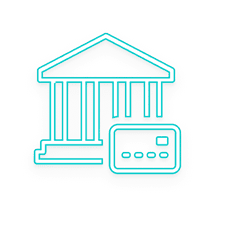


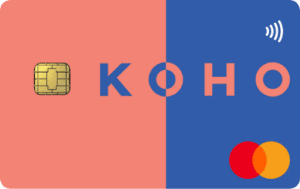

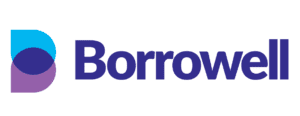




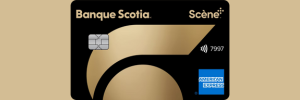








About The Author: Arthur Dubois
Passionate about personal finance and financial technology, Arthur Dubois is a writer and SEO specialist at Hardbacon. Since his arrival in Canada, he’s built his credit score from nothing.
Arthur invests in the stock market but doesn’t pay any fees because he uses National Bank Direct Brokerage online broker and Wealthsimple’s robo-advisor. He pays for his subscriptions online with his KOHO prepaid card, and uses his Tangerine credit card for most of his in-store purchases. When he buys bitcoins, it’s with the BitBuy online platform. Of course it goes without saying that he uses the Hardbacon app so that he can manage all of his finances from one convenient place.
More posts by Arthur Dubois